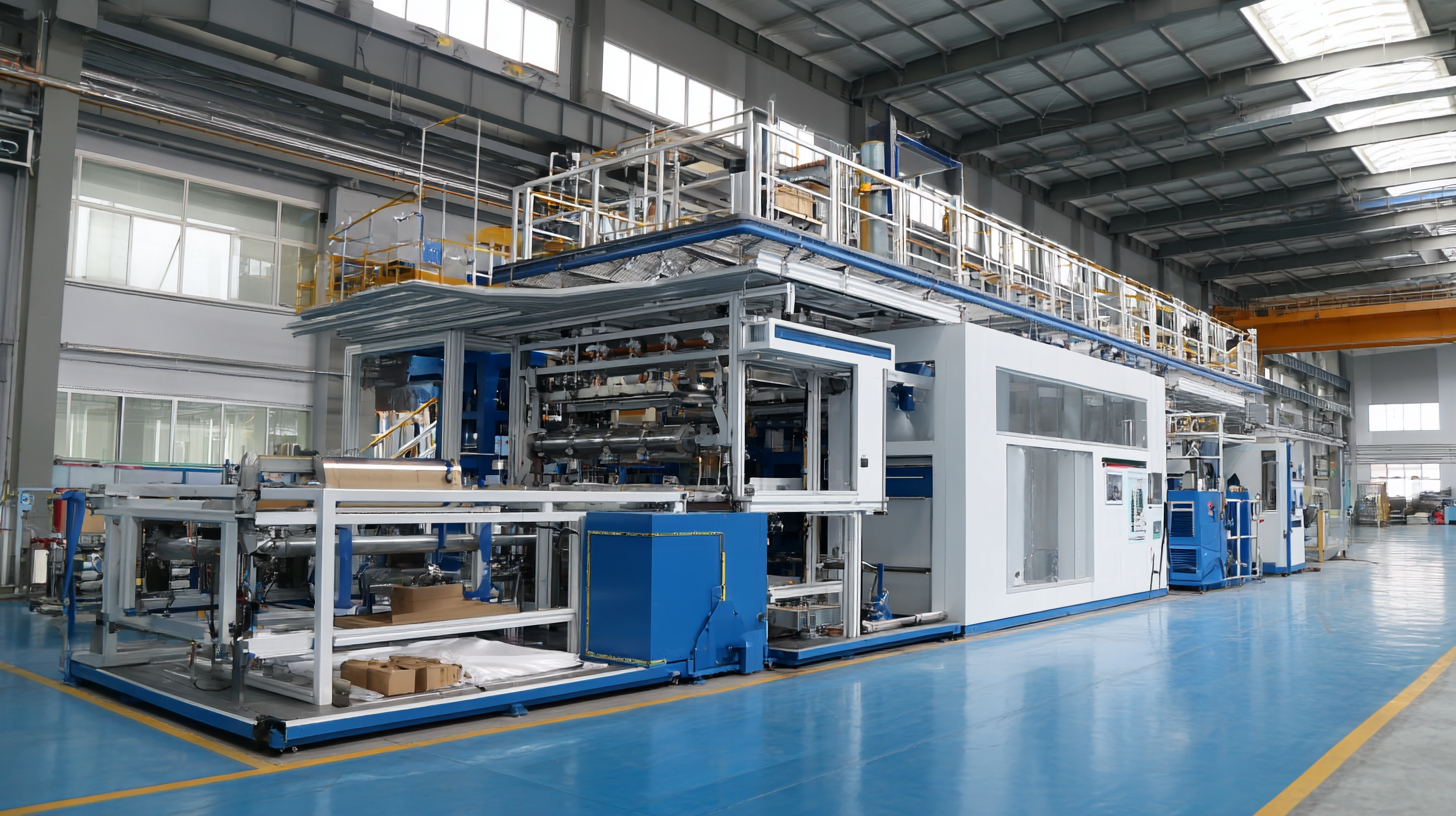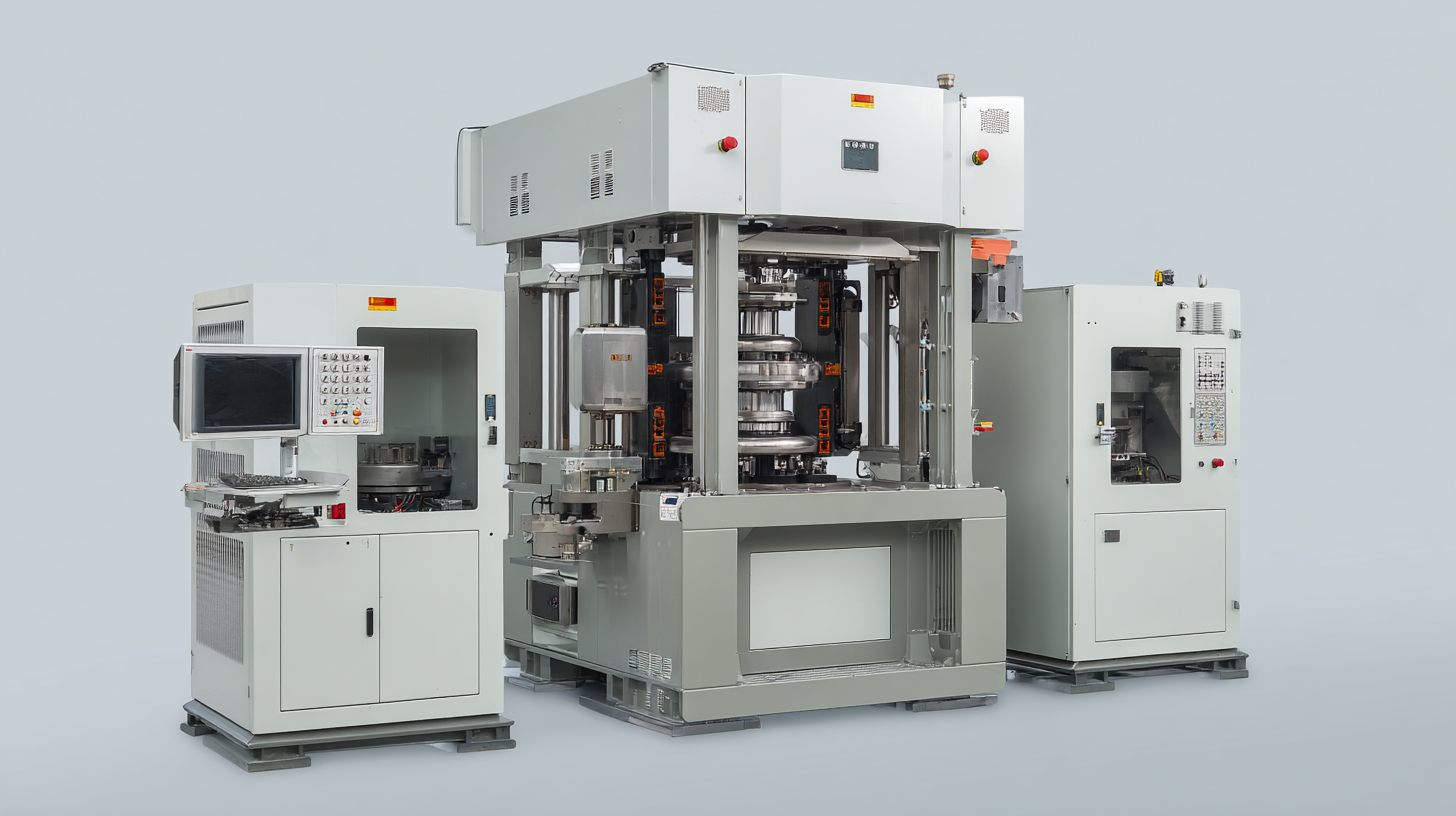Unveiling the Advantages of the Best Pulp Molding Machines for Diverse Product Applications
In the rapidly evolving landscape of sustainable manufacturing, the pulp molding machine has emerged as a pivotal technology for producing eco-friendly packaging solutions and diverse molded products. According to a report by ResearchAndMarkets, the global pulp molding market is expected to reach $1.95 billion by 2026, growing at a CAGR of 5.2% from 2021. This growth is driven by increasing demand for biodegradable packaging and consumer goods across various industries, including food and beverages, electronics, and cosmetics. The versatility and efficiency of pulp molding machines not only cater to a wide range of product applications but also align with the global shift towards sustainable practices. As businesses increasingly prioritize environmentally responsible manufacturing, understanding the advantages of the best pulp molding machines becomes essential for capitalizing on industry trends and maintaining competitive advantage.

Understanding Pulp Molding Technology and Its Evolution
Pulp molding technology has evolved significantly over the past few decades, transforming from rudimentary methods to sophisticated processes that cater to a wide range of product applications. Initially, traditional pulp molding involved manual techniques that were labor-intensive and limited in scale. However, advancements in machinery and automation have streamlined production, allowing manufacturers to produce high-quality molded pulp products at an unprecedented rate. Today’s machines are equipped with precision tools and innovative designs that ensure efficiency and reduce material waste, marking a significant departure from their early counterparts.
The versatility of pulp molding technology further enhances its appeal across various industries, including food packaging, electronics, and cosmetics. As consumer demand for sustainable and biodegradable products rises, pulped materials have found their niche in creating eco-friendly packaging solutions. By harnessing renewable resources, such as recycled paper and agricultural by-products, modern pulp molding machines deliver sustainable options without compromising quality or functionality. Moreover, the evolution of this technology has led to the development of customized molds, enabling manufacturers to create intricate designs tailored to specific product needs, thereby pushing the boundaries of what pulp molding can achieve.
Advantages of Pulp Molding Machines by Application Type
Key Advantages of Using Pulp Molding Machines in Manufacturing
Pulp molding machines have emerged as a pivotal technology in the manufacturing sector, particularly for producing sustainable packaging solutions. According to a report by Smithers Pira, the global market for molded pulp packaging is projected to grow at a CAGR of 6.6% through 2024, driven by the increasing demand for eco-friendly materials. These machines efficiently convert waste paper into high-quality molded products, significantly reducing the environmental impact associated with traditional packaging methods.
One of the key advantages of using pulp molding machines is their versatility in creating a diverse range of products, from trays and containers to protective packaging and industrial components. A study by MarketsandMarkets highlights that the flexibility of pulp molding allows manufacturers to tailor products to specific applications while maintaining cost-effectiveness. Additionally, the ability to integrate with automated production lines enhances efficiency, minimizing labor costs and production time. With these machines, businesses not only boost their sustainability credentials but also meet the growing consumer preference for environmentally responsible packaging.

Exploring Diverse Product Applications of Pulp Molding Machines
Pulp molding machines have emerged as a versatile solution for producing a wide variety of eco-friendly products across different industries. Their ability to create intricately designed items, from packaging materials to food containers, makes them essential in today's sustainable manufacturing landscape. According to a report by MarketsandMarkets, the global pulp molding market was valued at approximately $1.14 billion in 2021 and is projected to reach $1.56 billion by 2026, reflecting a CAGR of 6.4%. This growth highlights the increasing adoption of these machines in applications such as disposable tableware, protective packaging, and horticultural trays.
The diverse applications of pulp molding machines extend to sectors like agriculture and consumer goods. For instance, the agricultural industry has significantly benefited from pulp molded trays designed for seedlings, promoting both sustainability and efficiency. Additionally, manufacturers are turning to pulp molds to produce custom packaging solutions that not only reduce plastic waste but also meet the growing consumer demand for environmentally friendly products. A study by Grand View Research noted that the increasing preference for biodegradable packaging solutions was contributing to the rising use of pulp molding technologies, encouraging innovators to explore new product designs that meet market needs while minimizing environmental impact.
Industry Standards and Regulations Impacting Pulp Molding Production
In the burgeoning world of pulp molding production, industry standards and regulations play a pivotal role in shaping operational practices and ensuring product quality.
 Pulp molding machines are subjected to rigorous scrutiny to meet both safety and environmental guidelines. The compliance with such regulations not only ensures the safety of workers but also mitigates potential harm to the environment. From the selection of raw materials to the final product packaging, manufacturers must navigate a maze of regulatory requirements designed to promote sustainable practices.
Pulp molding machines are subjected to rigorous scrutiny to meet both safety and environmental guidelines. The compliance with such regulations not only ensures the safety of workers but also mitigates potential harm to the environment. From the selection of raw materials to the final product packaging, manufacturers must navigate a maze of regulatory requirements designed to promote sustainable practices.
Moreover, adherence to industry standards helps in fostering customer trust and satisfaction. By maintaining high production values, manufacturers can assure clients of the reliability and safety of their products. This is particularly crucial in industries such as food service and packaging, where regulatory compliance can significantly impact product lifecycle.
Investment in cutting-edge pulp molding machines that meet these standards can ultimately enhance production efficiency and open new market opportunities, reinforcing the competitive edge of businesses in this eco-conscious era.
Future Trends in Pulp Molding Technology and Equipment Development
The advancement of pulp molding technology is poised to revolutionize the manufacturing landscape, particularly in packaging and sustainable product solutions. Recent market research indicates that the global pulp molding market is projected to reach approximately USD 5.7 billion by 2027, growing at a CAGR of 5.6% from 2021. This surge is primarily driven by the growing demand for eco-friendly packaging alternatives, which are increasingly favored over traditional plastic products due to environmental concerns.
Future trends in pulp molding technology are expected to focus on enhancing efficiency and product versatility. Innovations such as the integration of artificial intelligence and automation in the molding process are on the rise, streamlining operations while minimizing waste. Additionally, advancements in raw material sourcing, particularly the use of recycled paper and agricultural waste, will contribute to more sustainable practices within the industry. As manufacturers embrace these emerging technologies, we can anticipate a broadening array of applications, ranging from food containers to consumer goods packaging, reinforcing the importance of pulp molding in addressing global sustainability goals.
Unveiling the Advantages of the Best Pulp Molding Machines for Diverse Product Applications
| Machine Model | Production Capacity (units/hour) | Material Type | Application Area | Energy Efficiency Rating |
|---|---|---|---|---|
| Model A | 500 | Recycled pulp | Food Packaging | A++ |
| Model B | 300 | Bagasse | Beverage Containers | A+ |
| Model C | 400 | Wood pulp | Electrical Goods | A |
| Model D | 600 | Hemp pulp | Cosmetic Packaging | A++ |
| Model E | 450 | Sugarcane pulp | Medicine Packaging | A |